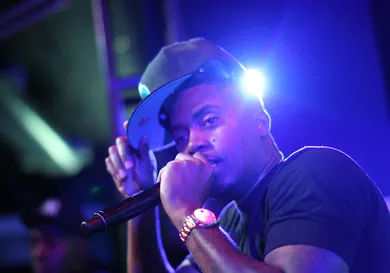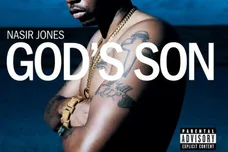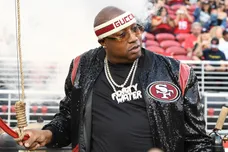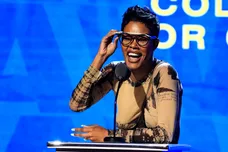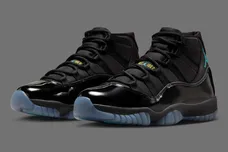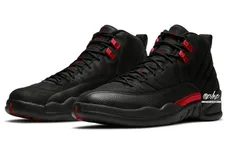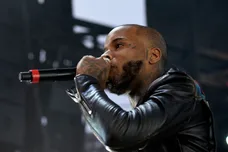Before Kendrick Lamar raised the bar with good kid, m.A.A.d city, Kanye West walked with Jesus, and the deadly East-West Coast rivalry, there was a young kid observing life and crime through his project window. That kid, who would initially start out as Kid Wave and then adopt the moniker Nas, gradually became molded and hardened by the effects of the crack era and Rudy Giuliani's New York, like the other thousands of youth from the same time period. With a future outside of the projects looking slim, Nas took up his childhood love of hip-hop and used world-weary intellect and a quick tongue to filter the hardships he experienced through a level of poetry that's never been seen before. A 20-year-old Nas dropped the seminal Illmatic in 1994. The second coming of Rakim had lived up to the hype, and it was still only the start of a legend.
It's debatable whether or not Nas was able to attain the level he reached on Illmatic ever again, but nevertheless the majority of his discography trumps that of his peers and many other lesser rappers. All at once, Nas' career came to represent hip-hop at its finest and its crippling contradictions. Fans have been listening to Nas leak wisdom for over 20 years, and he's respected enough for many to be willing to do so for 20 more.
From the misses to triumphs, we've ranked his albums from worst to best. See where they fall, and let us know how you would rank them in the comment section.
No. 1
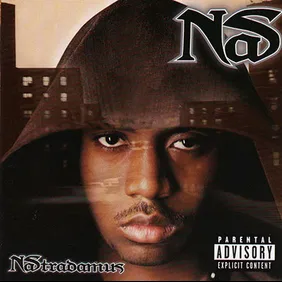
Nastradamus (1999)
Rushed due to heavy bootlegging, Nastradamus’ failures hits hard because of just how unsympathetic Nas comes across throughout the album. It’s one thing to have fallen off skill-wise, but Nastradamus sounds like someone completely turning his back on the poetry that’s affected so many, and opting for mainstream reaches. Is there an excuse for “You Owe Me” and “Big Girl,” a song about taking advantage of someone’s daughter?
Untitled (2007)
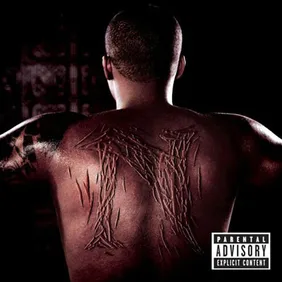
Nas’ 2007 album will ultimately be remembered for two things: it’s original, unutterable title and the stunning Jay Electronica-produced “Queens Get the Money” introduction. Within two-and-a-half minutes, Nas replaces missing fathers to unborn children (“Play this by your stomach/Let my words massage it and rub it”), throws in a few digestible punchlines, and claims the moment as the rise of Nas the Mighty (“I'm the shaky hand that touched George Foreman in Zaire/The same hand that punched down devils that brought down the towers”). It’s hard not to get goosebumps; this is Nas rising through the mist and returning in top form. The rest of Untitled continuously fails to reach this bar, as Nas sounds like he values self-importance rather than consistency and songcraft. A chief example is “Make the World Go Round,” which finds Nas trying to traverse overly saccharine synths and a random Chris Brown appearance. The Queens prophet sounds lost in a way he never has before.
Distant Relatives (2010)
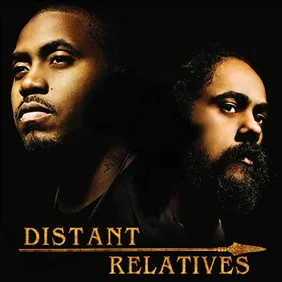
Nas’ collaboration with Damian Marley is flawed not by its good intentions, but by how it constantly wears them on its sleeves. The two actually do sound distant. Shared enthusiasm doesn’t shield the lack of musical chemistry, especially in lowlight “My Generation,” which Lil Wayne decides to hop on, for some reason.
I Am... (1999)
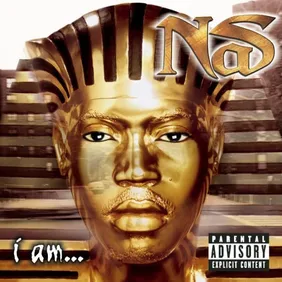
Nas’ first sign of wear wasn’t entirely his fault. His third album was original intended to be a double album, but that idea died as a lot of the sessions got bootlegged. The resulting product doesn’t see Nas decline in form as much as it does in his focus. I Am… is scatterbrained especially when compared to his previous work. It’s part mainstream-appealing boasting, part Mafioso rap, and part conceptual, but nothing really comes together thanks in part to the bland production. Although I Am… struggles as an album, it’s also noteworthy for containing some of his best material. There’s the depressing tale of adultery and suicide in the album-closing “Undying Love,” which was a bit of therapy as real life ex-girlfriend Carmen Bryan (Nas’ daughter Destiny’s mother) become known for cheating. There’s also a little song called “Hate Me Now,” too.
Hip-Hop Is Dead (2006)
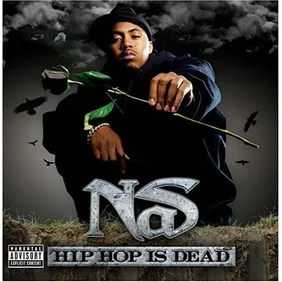
Nas’ mission to revitalize hip-hop wasn’t bolstered by creativity, but rather by boldness. He does away with the grumpy elder image to make statements with former foe Jay Z on the opulent, but honest “Black Republican” to slinging tales with Kanye West on the beautifully produced “Still Dreaming.” Unfortunately, the album never quite reaches the highs needed to make up for the terrible “Who Killed It?” Nas’ James Cagney impersonation sounds worse with every listen.
The Lost Tapes (2002)
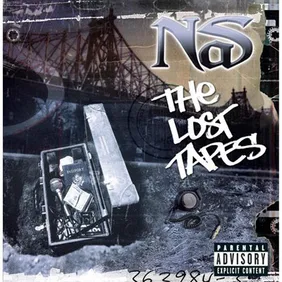
The unreleased cuts on this compilation aren’t “lost” in the truest sense, as a few of them have made rounds in various bootlegs. That said, it’s still impressive that a collection of outtakes and extras debuted in the Billboard Top 10 with very little promotion. The Lost Tapes is somewhat of an alternate vision of what I Am… — the first sign of a potential Nas collapse — could’ve been: more introspective, more focused. The compilation isn’t quite memorable as an album because of how all the tracks are notably sparser and less flashy. There aren’t any of the cathartic moments Nas has pulled off before, but it’s perfectly fine with classics like the nostalgia-inducing “Doo Rags” and the twinkling “U Gotta Love It” on the tracklist.
Street's Disciple (2004)
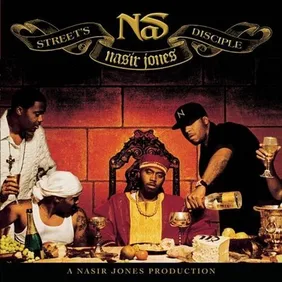
Nas always had trouble editing out unnecessary fat from his albums, so the idea of a double album sounded like a potentially bloated affair. Street’s Disciple had a tolerable share of duds, like the forgettable #StayWoke moments on “These Are Our Heroes” and “American Way” and the generally flaky production. But as you might’ve guessed from the obscene and absurdist opening lines on “Nazareth Savage” (which is just the third track, mind you), Street's Disciple is anything but bland. The glimpses of Nas’ creativity here should be just as notable as it being his longest album. Scarlett, who’s Nas’ female alter ego produced through a voice synthesizer, introduces herself right in the middle of the first disc (“Sekou Story,” “Live Now”). It’s experimental, but it’s more so another example of how powerful Nas the Storyteller is. It’s just a shame she dies in “Live Now”; she would’ve made for a good concept album, no?
Life Is Good (2012)
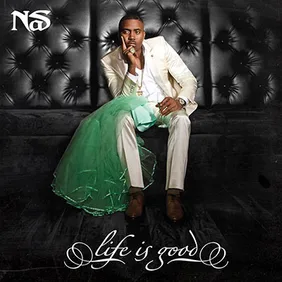
After declaring hip-hop dead six years prior and declaring war on, well, everything on Untitled, Nas’ latest album actually found him at a pretty content place. Nas had recently went through a rough divorce with Kelis, but hip-hop’s Here, My Dear found him messing round and possibly making a new genre—what engineer Young Guru calls adult contemporary hip-hop. Rap’s first critically acclaimed grown man album, Life Is Good finds Nas reconciling with his ‘90s vices with the fact that, at near 40, he still has plenty more to learn. Despite the severe misfire of “Summer on Smash,” Life Is Good finds Nas at the sharpest he’s been in a long time as he muses about the perfect woman with the ghost of Amy Winehouse on “Cherry Wine” and even revisits early ‘90s NYC danger on the Large Professor-produced “Locomotive.” He’s comfortable — the album is titled Life Is Good — but he does hint at yearning for his youthful years. Note the New Jack influences on album closer “Bye Baby” and “Reach Out.”
God's Son (2001)
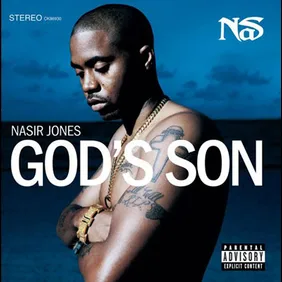
It would’ve made sense for Nas to maintain his tough posturing stance because he was still feuding with Jay Z. But a year after dropping “Ether,” Nas decided to take down the walls and release his most personal album yet. Perhaps it’s sort of a meta-diss (those exist?) at the falsity of Jay Z’s image, but even if it isn’t, Nas address the beef in the epic “Last Real Nigga Alive.” It’s a masterfully told truncated history of rap that weaves through the death of his childhood friend, his short break from rapping, and just why he was beefing with Jay Z. It’s less braggadocio and more poignancy: “I was Scarface, Jay was Manolo/ It hurt me when I had to kill him and his whole squad for dolo.”
While God’s Son saw Nas at his most gully, especially in career highlight “Made You Look,” what ties this album together is the idea that God’s Son may not have all his shit together. That’s why he envies the sight of a blissful infant (his daughter on The Alchemist-produced “Book of Rhymes”) and struggles to keep it together in the wake of his mother’s passing (“Dance”). Pain is temporary, however, and Nas reminds us of this in the closer “Heaven”: “Everyday I wake up, I'm blessed/Everyday you wake up and breathe another breath, you blessed.”
Stillmatic (2001)
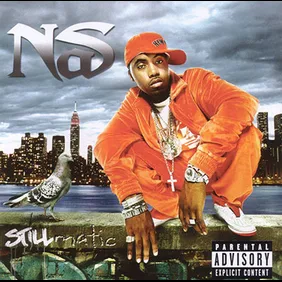
God’s Son featured Nas at his most vulnerable, Street’s Disciple deserves more props for its ambition, and Life Is Good saw Nas enter his 40s with a gracefulness that’s never been seen before in hip-hop. Stillmatic was Ray Allen draining that three-point at Game 6 of last year’s NBA Finals—he may have been finished if the album didn’t pop.
It’s a story that’s been recounted numerous times: of a once prodigious MC who’s fallen off and become canon fodder to another NYC giant laying claim to the throne. Nas hit a new nadir with Nastradamus and Jay Z eviscerated him in “Takeover.” But like a rap game Rocky Balboa, Nas came back with twice the lethal force and triple the brain. He fired back with the less pinpoint, but rawer “Ether.” Then he dropped Stillmatic, which featured more verbal bullets (“Got Urself A Gun,” “The Bridge”). He wasn’t just ready for war though; he’s painfully aware of its consequences and gazes at them with a colder eye. Highlight “One Mic” includes the brutal lyrics, “Everybody gotta die sometime, hope your funeral/Never gets shot up, bullets tear through the innocent.” “Rewind” would become known as another example of Nas’ storytelling prowess, “2nd Childhood” would be regarded as a smart take on the unnecessarily difficult process of being a grown-ass man, and Stillmatic immediately proved that Nas was ready for the new millennium.
It Was Written (1996)
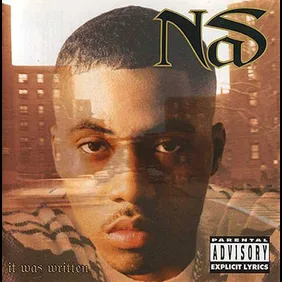
What was Nas really supposed to do? As great as Illmatic was, it was mediocre when it came to record sales. Nas also said in a recent Zane Lowe interview that he was weary of the sophomore jinx. Struggling commercial-wise out of the gate, it was clear Nas needed a change.
So Nas split from then-manager MC Serch for Steve Stoute and hooked up with the likes of The Trackmasters and Dr. Dre for It Was Written, which reached gold in half the time it took Illmatic to do so. It was more criticized than Nas’ debut, too. It’s a bit unfair, however. Capturing lightning in a bottle twice is rare in music and thrice rarer in hip-hop (again, sophomore jinx). Plus, a two-years-older Nas has just a little more experience outside of the Queensbridge walls. He has a different perspective, but it’s not articulated in the same razor sharpness as It Was Written. There’s some fat on here like “Nas Is Coming” and “Watch Dem Niggas.” That said, It Was Written features Nas at his finest, like in the narratives of “Shootouts,” the stunning, dark perspective of “I Gave You Power” and the technical swordsmanship “Live Nigga Rap.” Sophomore jinx averted.
Illmatic (1994)
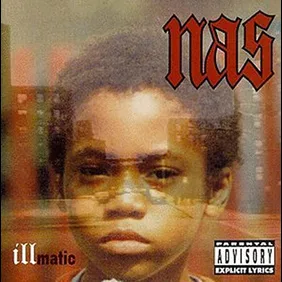
Illmatic is one of those albums for which there’s been so much said about it, but never quite enough. There’s been anecdotes, literary analyses, thinkpieces, and various forms of banter, and yet it feels nothing can succinctly explain what a teenage Nas did in less than 40 minutes with the poetic precision of a hood F. Scott Fitzgerald and the wisdom of a 19-year-old going on 40.
We almost got an entirely different album, too. Illmatic was intended to be a longer project, but Nas’ eagerness to show the upcoming material to the friends who helped mold it led to bootlegging. So the debut was rushed and we “just” get 10 tracks. It’s short structure is tightly constructed, however, and the quick pace of that vivid, unflinching imagery and bustling production makes this debut somewhat of a dream-like experience—right from when you climb from the subway station to inhale the New York city smog.
The life and trials are rendered thrillingly as DJ Premier’s throbbing bass line soundtracks a shootout on “NY State of Mind” and Nas is just grateful to not be dead at 20 on L.E.S.’ slow groove-sampling “Life’s a Bitch.” But what’s elated in form is grounded in content. As Illmatic pushes along, it’s clear that Nas’ intensity comes from the desire to heal his wounds. Nas name drops deceased childhood pal Ill Will numerous times (the otherwise exalting “The World Is Yours”), converses with a near-soulless 12-year-old (“One Love”), and keeps his incarcerated pals in mind right after listing his fantasies (“Memory Lane (Sittin’ in Da Park)”. Illmatic is an example of hip-hop mastery for some. For others, it’s a means to relieve anxieties.
